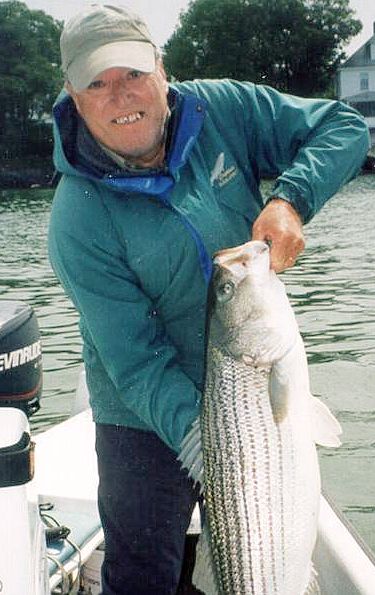
Every fall a very special fishing event occurs from Cape Cod to South Carolina – fly fishing for false albacore, nicknamed albies and fat alberts by many anglers. They are difficult to attract to a hook or lure, when hooked; they provide an exciting fight and they are the perfect catch and release fish as they are terrible table fare and there is zero value on them as a commercial fish; so everyone releases them.
False albacore are members of the tuna family and reach weights to 20 plus pounds with averages ranging from seven to 12 pounds. But don’t let the small size fool you – they are admiralable fighters on seven to 10 weight fly rods. Actually, seven weight rods are a little light for them in my opinion. Seven weight rods just can’t fight the fish fast enough to release them alive after the fight. They are a small fish that will easily take a true 50 yards of backing and in many fights, over 100 yards. They are a true test for anglers who enjoy the hunt, the take and the release.
Prior to false albacore arriving in Cape Cod waters, another quality fish arrives, the Atlantic bonito, nicknamed bones by many anglers. Bones don’t run as big as albies, but they are also difficult to the hook and fight vigorously. Apposed to albies, bones are excellent table fare and prized by many who seek them. They also have a set of teeth that albies don’t have, making it a little more difficult to land them with fine leaders. Fly anglers will hook at least 10 times the number of albies to bones per day of fishing. Targeting bones is sometimes difficult as they are around when large schools of bluefish are feeding and when fat alberts arrive, bones seem to disappear. False albacore seem to drive Atlantic bonito away.
This past fall, false albacore weren’t thick on Cape Cod, so the Atlantic bonito were working the waters of Vineyard and Nantucket Sound daily during the months of August and September. I can unequivocally say that I easily boated more bones for my clients during the fall of 2008 than any previous year.
I have puzzled that over, trying to determine why my luck fishing bonito was so good this past fall. What did I do different that may have changed my success rate? Several factors may have changed my luck – or maybe it was just luck.
First, I surmised that the lack of good schools of false albacore kept the bonito in the waters I was fishing longer into the fall season; making them more available than usual.
Second, there weren’t many large bluefish around that might drive the bones away, again making them more available than usual.
Third, there weren’t as many crazy fishermen chasing them all over and putting them down every time they surfaced.
Small forage fish bait was in short supply, making the artificial fly presentations more attractive to the fish.
Other game fish were in short supply during September, so we fished more vigorously for bonito, staying on a few fish longer than we usually would. I didn’t go running around looking for greener pastures to fish in.
And then the fly! Yes, it might just be that one fly I had never heard of turned the trick. One of my customers showed up with his usual good supply of flies. We lost a couple of my usual selections to what we surmised were albies. My customer asked me to look at his large fly box to see if there was something there that might work. I quickly noticed a small 3 1/2 inch white fly I had never seen before. We tied it on and landed two Atlantic bonito that day. I tied up a bunch of them that night and continued to catch bones more regularly than usual. The fly you ask – the Monkey Brain originated by one Garret Booth of New Hampshire tied on a 1/0 hook. The fly is simple to tie and has the elements needed to catch. I used a size 1/0 Gamakatsue live bait hook to tie to. The tail is simply four wimpy Schlappen feathers with four silver crystal flash lengths buried in the feathers, lightly palmered schlappen where the body and wing meet, a silver body with large black over silver paste on eyes. The body and head are epoxied with the eye area built up a little to provide a bulge.
The action of the Monkey Brain fly in the water is wonderful. It is the correct size and profile of the prevailing bait and the epoxied body gives it a nice jigging action. It is easy to cast and the Gamakatsue hook readily penetrates the hard mouth of bones and doesn’t straighten under pressure of such a hard running fish.
Next fall we will see if this fly is a magic touch or just a flash in the pan. I think it will be an exceptional, catching fly for bonito as well as striped bass and false albacore. Time will tell.
